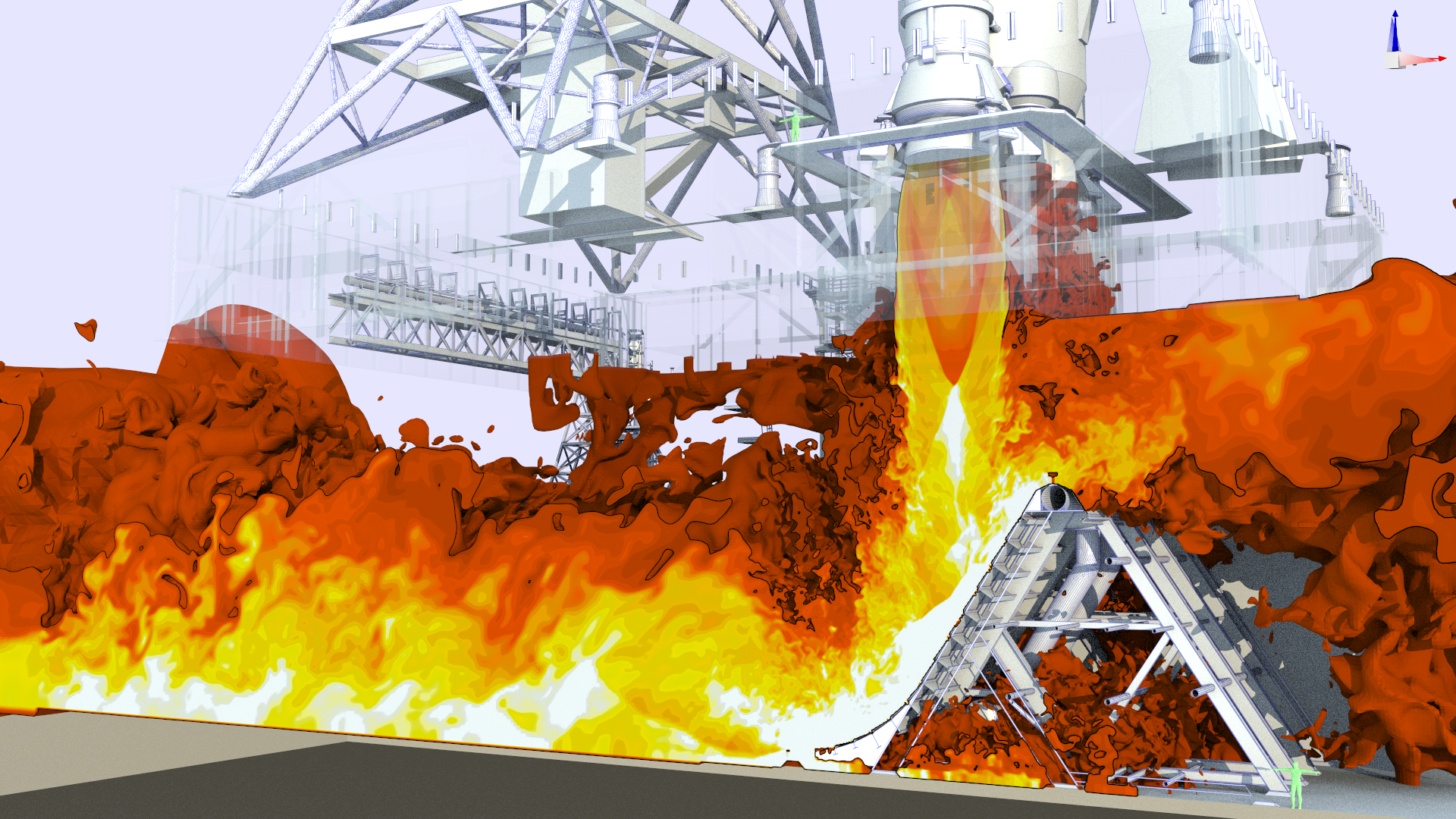
From designing rocket launch pad components and safer rotorcraft to improving flood and drought forecasts to modeling the formation of planetary disks, NASA will highlight supercomputing advances at SC18, the International Conference for High Performance Computing, Networking, Storage and Analysis, Nov. 12 to 15 in Dallas.
NASA is one of a handful of organizations that has participated in the conference every year since its inception 30 years ago. This year at SC18, representatives from six NASA centers, along with university and industry partners, will showcase their latest findings from more than 35 projects—all made possible by the space agency’s powerful high-performance computing resources.
Supercomputers play a critical role in hundreds of NASA projects, supporting missions that explore the solar system and beyond. NASA experts will discuss technology advances at the agency’s two leading supercomputing centers, NASA’s Ames Research Center in California’s Silicon Valley and NASA’s Goddard Space Flight Center in Greenbelt, Maryland.
Recently, the NASA Advanced Supercomputing facility at Ames expanded the power of its energy-efficient Electra modular supercomputer by 27 percent, for a total of 124,416 processor cores and a peak speed of 8.3 petaflops (8,300 trillion floating-point operations per second). Simulations run on Electra improve risk models for asteroid impact scenarios and design of future urban air mobility vehicles. Building on the success of Electra, construction has begun on the facility’s expansion to provide a more cost-effective, energy-efficient supercomputing environment and meet the agency’s increasing needs for high-performance computing resources.
The NASA Center for Climate Simulation at Goddard increased the performance of its Discover supercomputer by more than 40 percent in 2018 and plans a similar augmentation next year. A new 20,800-core scalable unit is the first NASA computing system to use Intel’s Omni-Path interconnect. At 100 gigabits per second, it offers nearly twice the speed of the interconnect deployed in the rest of Discover. Goddard’s supercomputer now has a total of nearly 108,000 processor cores and a peak speed of just over 5 petaflops. Discover’s newest unit enables global simulations implementing advanced physics schemes for weather and climate with four times finer resolution than daily NASA weather forecasts. These simulations provide insights into the physical processes that represent clouds in global models.
Both facilities are expanding the range of supercomputing offerings to provide secure and supported access to commercial cloud resources. This new NASA high-performance cloud computing service will leverage existing Ames procurement, account management and security services.
Attendees at SC18 will see demonstrations at NASA’s exhibit booth #2609 by scientists, engineers and technologists from across the U.S., including Ames; Goddard; Jet Propulsion Laboratory, Pasadena, California; Langley Research Center, Hampton, Virginia; Marshall Space Flight Center, Huntsville, Alabama; and NASA Headquarters, Washington.
Media interested in conducting interviews before the conference should contact Gina Figliozzi at gianine.figliozzi@nasa.gov/650-604-4789 or Rob Gutro at robert.j.gutro@nasa.gov/301-286-4044.
Media interested in scheduling on-site interviews should contact Jill Dunbar at jill.a.dunbar@nasa.gov/408-203-8048 or Jarrett Cohen at jarrett.s.cohen@nasa.gov/301-257-9595.
For more information about NASA’s participation at SC18, visit:
Authors:
Gianine Figliozzi
Ames Research Center, Silicon Valley, California
650-604-4789
gianine.figliozzi@nasa.gov
Rob Gutro
Goddard Space Flight Center, Greenbelt, Maryland
301-286-4044
robert.j.gutro@nasa.gov






























